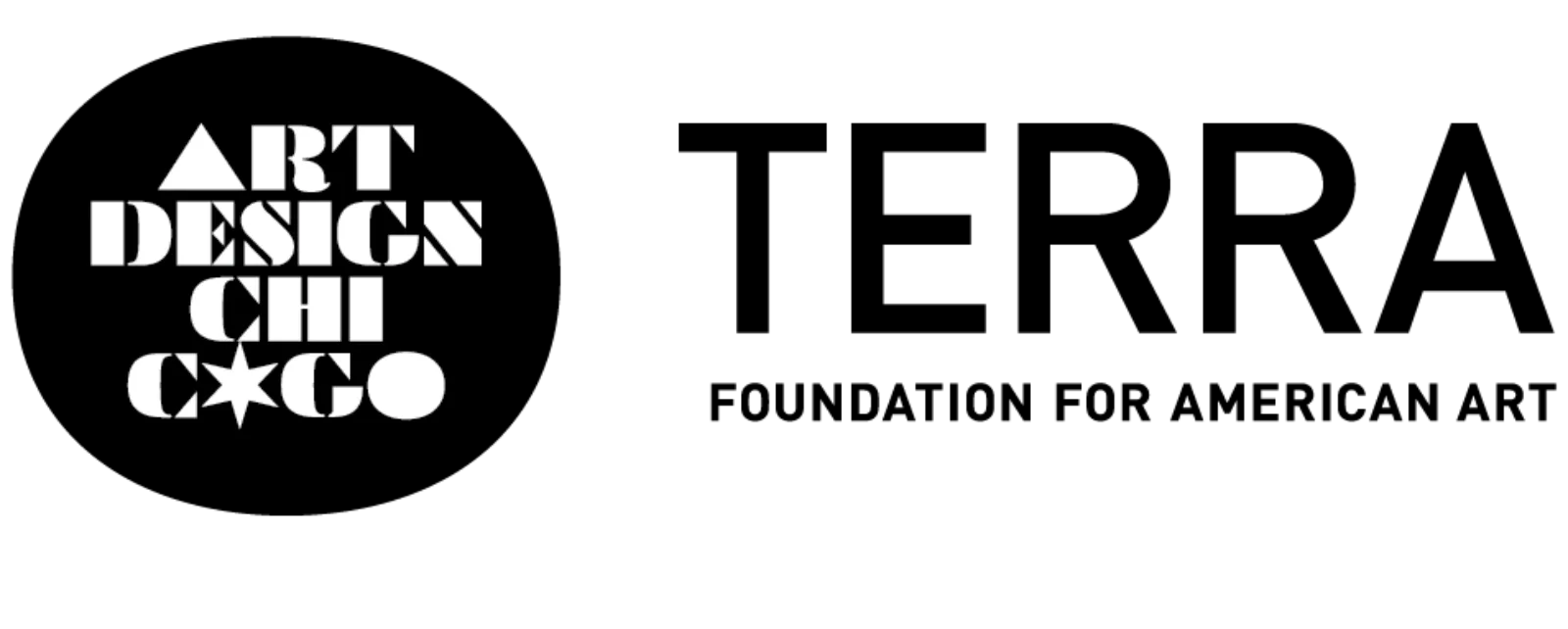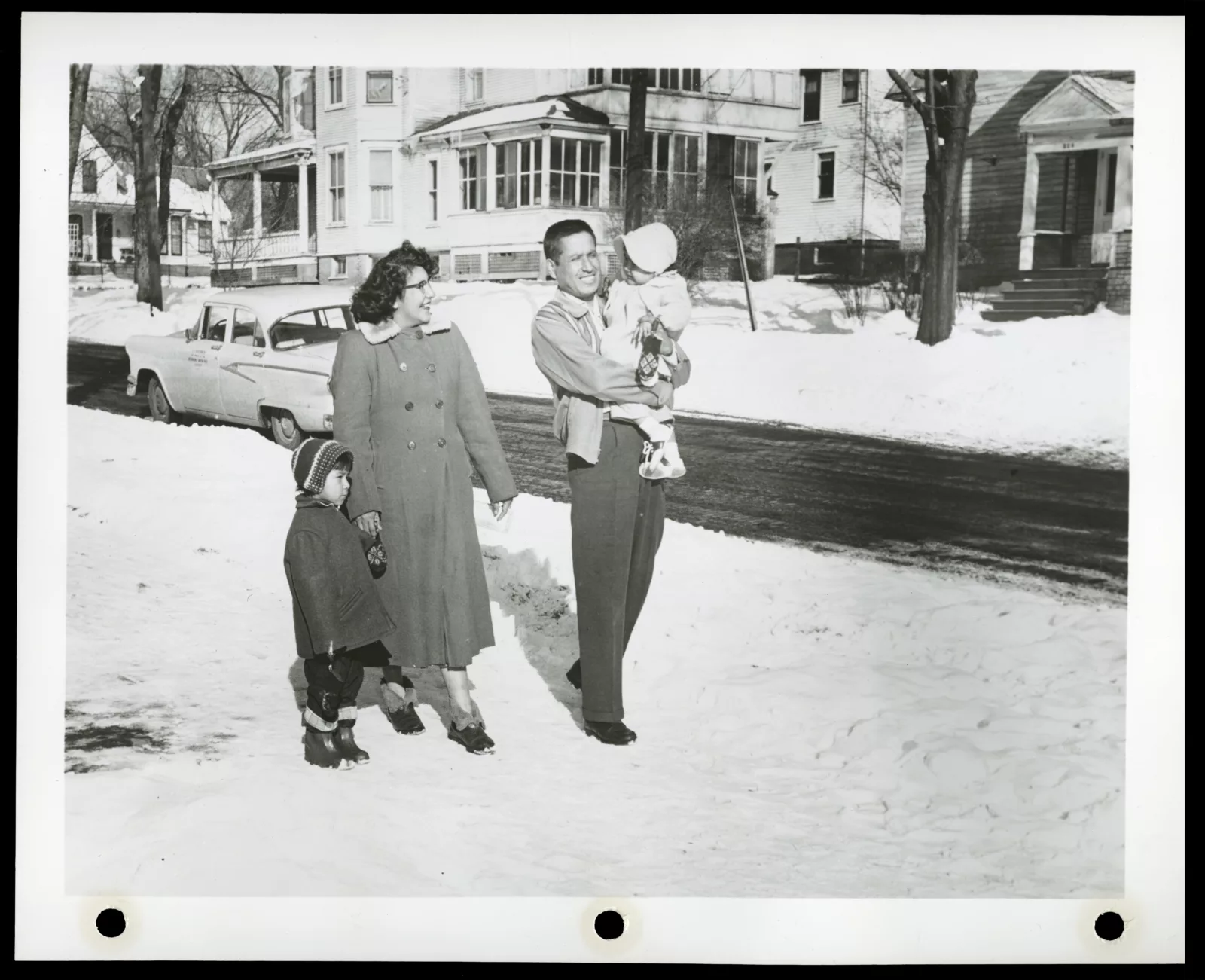Home to the Potawatomi, Odawa, Ojibwe, Peoria, Kaskaskia, Myaamia, Wea, Sauk, Meskwaki, and Ho-Chunk peoples, the place we now call Chicago has long been a historic crossroads for many Indigenous people and remains home to an extensive urban Native community. Yet most Chicagoans are unaware of the city’s history as a home to diverse Indigenous peoples and the vibrant Indigenous communities present today. Part of a multifaceted initiative developed in partnership between the Newberry, advisors from the Chicago Native community, and representatives from tribal nations with historic connections to Chicago, this exhibition reflected the dynamic and complex aspects of Native life in Chicago from the seventeenth century to the present. The exhibition drew largely on the Newberry's collection while also showcasing new work by contemporary Native artists, including Jason Wesaw (Pokagon Band of Potawatomi), Camille Billie (Oneida), and Jim Terry (Ho-Chunk).
Curators
- Rose Miron, Director of the D'Arcy McNickle Center for American Indian and Indigenous Studies
- Analú María López (Huachichil/Xi'úi), Ayer Librarian and Assistant Curator of American Indian and Indigenous Studies
- Doug Kiel (Oneida), Department of History, Northwestern University
- Dave Spencer (Mississippi Chata/Dine), American Indian Center of Chicago
Exhibition Related Programming
Native American Dance and Regalia - On September 28, 2024, The Newberry hosted this program that featured performances from The Black Hawk Dance Company, an introduction by Dorene Wiese (Ojibwe), and a presentation by photographer Sharon Hoogstraten about regalia used by Potawatomi tribes across the nation.
Indigenous Artists and the Archive - Indigenous artists Camille “Katahtu’ntha” Billie (Oneida), Jim Terry (Ho-Chunk), and Jason Wesaw (Pokagon Band of Potawatomi) delved into our collection as Artists in Residence before creating commissioned artworks that are currently on display in the Indigenous Chicago exhibition.
Mapping Indigenous Chicago - In the 2024 D’Arcy McNickle Distinguished Speaker Series, scholars involved in the development of the all-new interactive maps created for the Indigenous Chicago project spoke about the creation of the maps and discuss the challenges they faced in deciding how to represent various cultural aspects.
Indigenous People and the Chicago Portage - In this edition of “Conversations at the Newberry,” historian John William Nelson discussed researching issues of land use and landscape change, focusing on the Indigenous history of Chicago waterways, with Tribal Historic Preservation Officers Eric Hemenway and Raphael Wahwassuck.
A Note on Our Collections
The Newberry is home to one of the largest print and manuscript collections related to American Indian and Indigenous Studies in the world. We acquired the items in good faith from what were believed to be their proper owners. Yet we also acknowledge the long history of removal of cultural heritage from American Indian and Indigenous communities, sometimes through inappropriate, exploitative, or unethical means. We recognize this historical context and seek to build reciprocal relationships with the communities from which these items and the knowledge they carry came. Today, we continue to grow the collection to include materials representing Native writers, artists, and activists, while intentionally working with communities to ethically steward materials within the collection.
Though items in the Newberry collection are not subject to the Native American Graves Protection and Repatriation Act (NAGPRA), the library has developed a policy related to culturally sensitive materials so that tribal nations may help determine how materials related to their communities are used.
In the rare cases where it may be appropriate, the Newberry is open to discussing returning items to Indigenous communities. Most recently, the Sisiyutl house plank—one of the only items of Indigenous material culture housed at the library—was repatriated to the U’Mista Cultural Center in 1998 and returned to Alert Bay in British Columbia in 2020, having been housed at the Newberry in the interim at the request of the U'mista Cultural Society.
Supporters
The Indigenous Chicago project is generously supported by the Terra Foundation for American Art, the Gaylord and Dorothy Donnelley Foundation, the Richard H. Driehaus Foundation, The Elizabeth Morse Charitable Trust, The Field Foundation of Illinois, The Whiting Foundation, The Research for Indigenous Social Action and Equity Center at the University of Michigan, and Carleton College.
Planning for Indigenous Chicago was generously supported by the Mellon Foundation.
Indigenous Chicago is part of Art Design Chicago, a citywide collaboration initiated by the Terra Foundation for American Art that highlights the city’s artistic heritage and creative communities.


